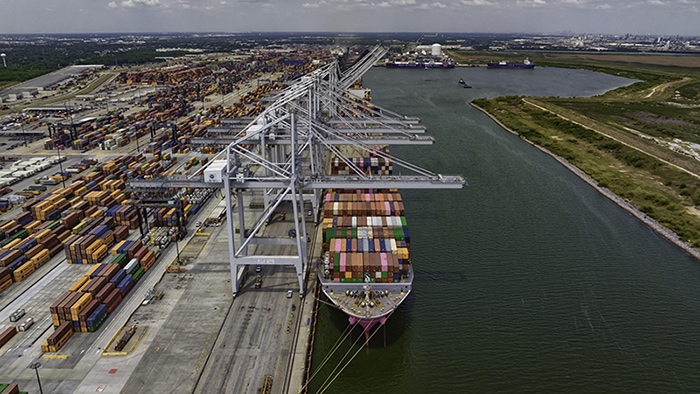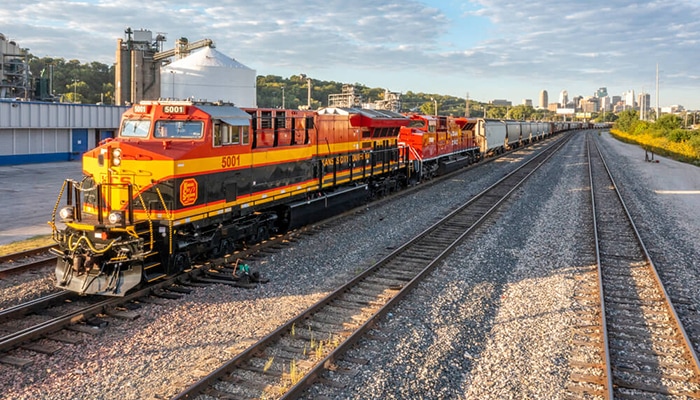How to Leverage Rail Intermodal
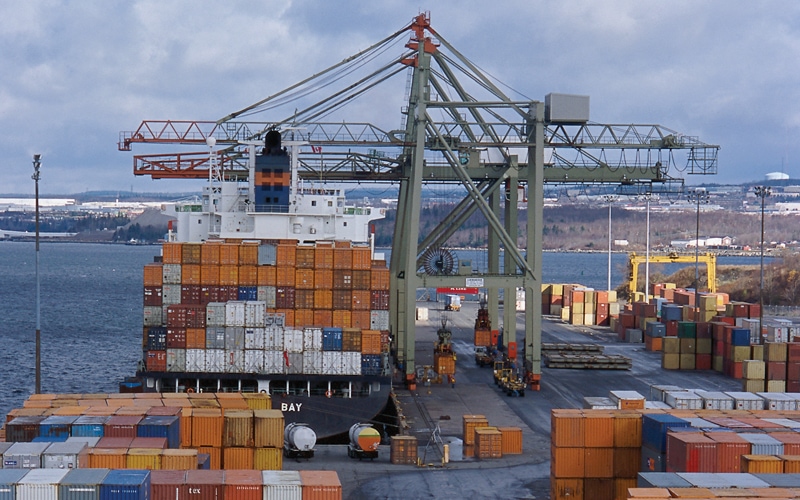
Intermodal shipping presents challenges, but it also offers great opportunities and benefits. Follow these strategies to help ensure your intermodal shipments move as cost-effectively and efficiently as possible.
More shippers could take advantage of rail intermodal shipping, as traffic has fallen recently. U.S. rail intermodal traffic for the first eight months of 2023 was 8.3 million intermodal units, down about 9.2% from 2022, the Association of American Railroads (AAR) reports.
Yet in 2022, U.S. rail intermodal shipping volume accounted for approximately 27% of revenue for major U.S. railroads, more than any other rail traffic segment.
One driver behind the drop is lower demand, as companies correct after having expanded their inventory levels during the recent supply chain disruptions. Respondents to the National Association of Manufacturers Outlook Survey for the third quarter of 2023 expect inventories to dip 1.8% over the next 12 months.
“It’s a flip from the past couple of years,” says Dennis Anderson, chief strategy officer with logistics company ArcBest. The shift has prompted a drop in import container numbers and excess transportation capacity.
Also playing a role is the growing number of ships heading to ports on the East and Gulf Coasts. Container volume at the Port of New York and New Jersey, for instance, jumped about 25% between 2020 and 2022.
Many Gulf and East Coast ports are relatively close to consumer markets, making trucks more competitive.
Conversely, “intermodal boxes that come into Los Angeles or Long Beach and are headed for Chicago or Dallas have to travel several thousand miles,” notes Todd Tranausky, vice president, rail and intermodal, with FTR, a freight transportation research provider.
Typically, rail transportation offers significant cost savings when compared to over-the-road transport. “But in the current deflationary market and slow peak season, that is not the case,” says David Spencer, vice president of market intelligence at freight brokerage firm Arrive Logistics.
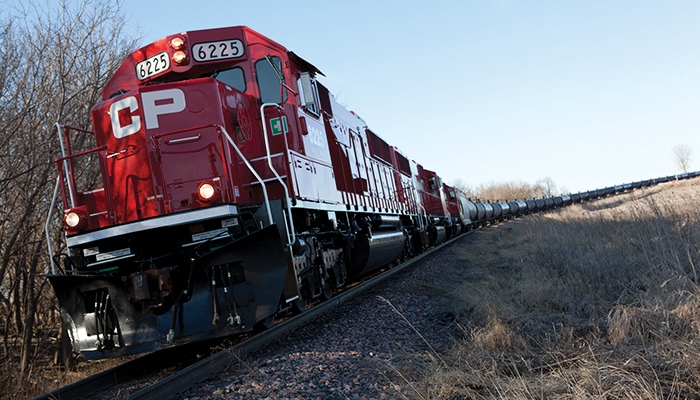
Moving freight by rail instead of truck can reduce greenhouse gas emissions by up to 75% on average, according to the AAR.
Intermodal Shipping Challenges
Another factor is that “trucks are easy,” says Rob Russell, senior consultant with PLG Consulting. Many trucking companies provide good service and can use the highway system to serve any shipper.
For rail to be cost-effective, the rail trip typically needs to be at least 550 miles, Russell says. In addition, shippers need multiple runs each day to make the overall product most efficient.
Rail’s generally slower speed when compared to truckload shipments likely will become more of a challenge as younger consumers who’ve grown up with ecommerce and rapid delivery times gain more buying power, says Matt Dolly, research director with real estate firm Transwestern.
Another obstacle is the number of “disparate and often conflicted entities required to move freight intermodally,” says Karl Hatt, vice president with Tompkins Solutions. Given a lack of investment in systems, it takes considerable effort to coordinate the myriad touch points required to move containers from the dock through rail yards, to a chassis, and on to the consignee.
“Each touch point increases the risk of delay, damage, and shrink,” Hatt says.
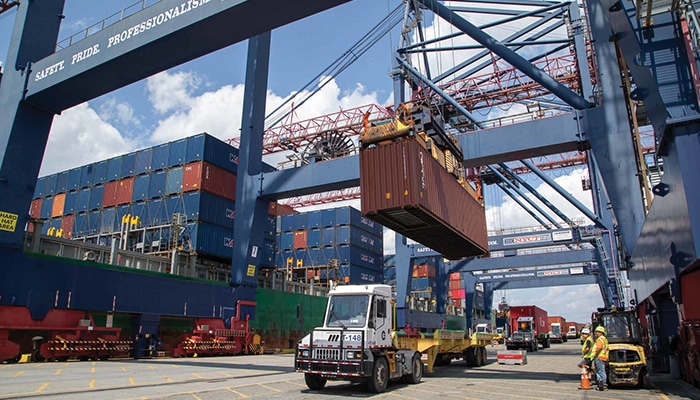
One factor behind the drop in intermodal use is the growing number of ships heading to East and Gulf Coast ports. Container volume at the Port of New York and New Jersey, for instance, grew 25% from 2020 to 2022. Proximity to consumer markets makes trucking more competitive.
How to Ensure Efficient Intermodal Shipping
The challenges are real, yet intermodal rail can play a valuable role in many shippers’ logistics operations. “Rail performance is at a high level, making it a good time to consider intermodal, particularly for longer haul moves,” Anderson says.
By leveraging intermodal transportation, shippers can reign in both costs and carbon emissions. Moving freight by rail instead of truck lowers greenhouse gas emissions by up to 75% on average, the AAR reports.
“The rails are more versatile than many people give them credit for,” says Christopher Brach, senior vice president, general manager with Radiant Road and Rail. Contrary to some perceptions, rail lines can move many—although not all—hazardous materials, as well as refrigerated goods. Properly blocking and bracing shipments cuts the risk of damage.
Shippers can take steps, such as partnering with intermodal partners and leveraging technology, to ensure their intermodal shipments move as cost-effectively and efficiently as possible. The following strategies can help.
Research. Once shippers understand the intermodal network and the locations of the nodes and lanes served, they can determine if their shipping patterns overlap with the available lanes, Russell says.
“You’ve got to look at the lanes,” Brach says. This is something of a moving target, as the distance at which intermodal makes sense fluctuates with changing truck rates. As truck rates drop, trucking becomes more competitive with intermodal.
Shippers within about 150 miles of a metro area, however, typically will find a viable intermodal option, as most drayage networks are built to support intermodal movement within about that distance. In larger markets, such as Chicago and Los Angeles, drayage networks can extend to about 200 miles.
Leverage technology. One key to successful intermodal operations is a transportation management system (TMS) that incorporates disparate data sources and provides automated functionality to provide the user end-to-end shipment visibility.
A cloud-based TMS that provides shipment execution and visibility across multiple modes means “shippers stay in the know the entire time their shipments are en route,” says Lisa Flohr, director of operations with Nexterus, a supply chain solutions provider. They can respond quickly to unexpected delays because they’re notified when they occur.
Forecast. The better shippers can forecast their supply chain needs, the more applicable intermodal transportation can be, Brach says. Shippers that know they will have an extra day or two of lead time might be able to consider different options.
For instance, because railroads often operate 24/7, a shipper might use Friday and Monday for drayage and truck, and then Saturday and Sunday for the rail portion of the trip.
Transload. Transloading—or transferring goods from one mode of transportation to another during shipping—can be a way to overcome logistics challenges, such as a lack of direct shipping routes.
With intermodal, transloading often includes shifting imports that arrive in 40-foot containers to 53-foot boxes. This can lower transportation costs.
The 53-foot containers typically move on higher priority trains, accelerating transport time, says Danny Dever, senior product manager of TransmetriQ, a business unit of rail technology provider Railinc.
To transload, shippers typically need to find a warehouse or transloader that can accommodate the freight along their routes. They also need to decide whether they want to own their containers. This decision will, in some cases, determine what rail routes or carriers they can use.
Consider both containers and chassis. Shippers that decide to own a container fleet also need to build their chassis inventory. “It’s an additional expense, but it’s worth the investment to be able to control how your goods move,” Tranausky says.
Partner with IMCs and carriers. Intermodal marketing companies (IMCs) provide multiple services, typically including organizing purchases with railroads and trucking firms to help shippers bypass some steps within the intermodal process. Some third-party logistics providers (3PLs) are also IMCs.
Shippers should consider partnering with an intermodal company to help them manage the complexities of this kind of transportation.
The partner should be able to use software to connect to the rail lines, and then evaluate the rates and lanes to determine what will work best for each shipper. “The provider should make heavy use of data analytics and software optimization,” Anderson says.
IMCs or 3PLs often provide visibility and data. “The more data you have, the better you can build out different lanes and see what makes sense for your organization,” Dever says.
In addition, a partner that can provide estimated times of arrival for your shipments can help you plan and build network efficiencies.
Much work is underway in analytics and machine learning, as well as assessing the history of different intermodal trains to help in forecasting their current operations, Dever says.
This information can help shippers more accurately schedule their own work of unloading or moving shipments from, say, distribution centers to retail stores. Shippers should ask to see the reports and determine which analyses best fit their needs.
Ideally, the intermodal partner can assemble the data and analytics in one place. This way, the shipper doesn’t have to scour multiple websites to determine where a container is, says Andy Adams, senior solutions engineer with Railinc.
To ensure they’re getting competitive rates and services, most shippers benefit by working with several intermodal providers. This may mean engaging a primary IMC that handles, say, 70% of their business, and then a few others to handle the rest. Then, the shipper can benchmark each provider’s service and have a replacement option if the primary fails.
“Don’t chase just price,” Russell says. “Chase service and price.” Service plays a critical role, especially for shippers who need a truck-like product.
Shippers also should build relationships with their rail carriers. “Make sure the railroad knows who you are and why it’s important they move your freight,” Russell says. “Hold them accountable when they don’t and praise them when they do.”
Prebook drayage. Prebooking drayage services prior to the arrival of the shipments results in fewer delays, Flohr says. Depending on who is responsible for each component of the transaction, the shipper, the 3PL or the IMC could prearrange drayage.
Watch for new lanes. To build volume, the rail lines are starting to react to port shifts and launching new services, Tranausky says. Shippers might find new lanes that make sense for their distribution networks.
For instance, starting in June 2023, Union Pacific Railroad expanded its services at Port Houston to allow intermodal containers to be loaded directly onto railcars and transported by rail to inland markets (see sidebar).
Aim for consistent shipment flows. The more regular the shipment flows, the better the likely intermodal outcome. “The intermodal network struggles with variability,” Russell says.
If shipment volumes vary, consider level loading with intermodal, Russell says. (Level loading refers to balancing production to attain consistency.) If surges occur, consider adding truck transport to the solution set, unless you negotiate surge capacity into your intermodal contract.
Monitor port negotiations. In 2024, the International Longshoreman’s Association contract that governs many port workers on the East and Gulf Coasts will expire. Shippers using these ports should keep an eye on negotiations.
Consider rail for nearshoring. Cross-border intermodal options are improving. Shippers that operate across Mexico, the United States, and/or Canada will want to explore intermodal as an option, Anderson says. For example, the newly formed CPKC railway (Canadian Pacific Kansas City) connects North America from Mexico to Canada.
When a pre-clearing process has been completed, intermodal shipments typically experience fewer delays than over-the-road transport for cross-border shipments, Dolly says.
Try intermodal. With intermodal volumes and prices currently down, shippers can try intermodal at a low price point and see if it works for their supply chain, Russell suggests. To gain a solid handle on the role intermodal might play in their logistics initiatives, shippers should aim for about 30 test loads for a given lane.
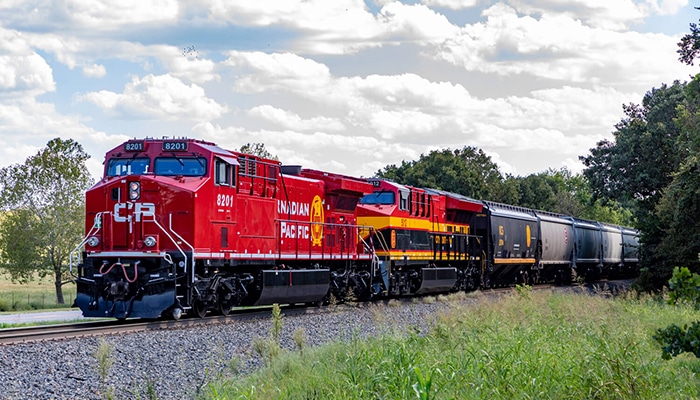
Intermodal service options for moving cross-border shipments are improving. For example, the combined Canadian Pacific Kansas City Southern network spans across both coasts of Canada, and moves through the U.S. Midwest to reach several points in Mexico.
Syncing People, Equipment & Systems
While intermodal rail could be a viable option for many shippers, currently about one-third of containers coming into the United States end up using rail out of the ports.
“This is the age-old chicken or egg scenario,” Hatt says. Shippers are leery of moving to rail because it initially impacts service levels, and intermodal carriers won’t invest unless there is more market share.
More automation also will be key. “The ports need to invest in technology to turn ships faster; rail companies need to invest in rail, equipment, and systems to process faster and more reliably; and distribution centers need to invest in equipment to quickly turn drivers and containers to reduce delay and demurrage,” Hatt says. All the touch points need to be in sync in terms of people, equipment, and systems.
Rail lines in the West should consider developing viable shorter hauls, such as from the West Coast ports to Phoenix, Las Vegas, and Salt Lake City. “Rail lines need to embrace these new short-haul markets and provide regular services,” Russell says.
Yet all is not gloomy, Hatt notes, as positive movement in creating the infrastructure for more intermodal traffic is happening.
Among other changes, more chassis are being manufactured, locomotives are being upgraded, and monitoring and sensor capabilities are being added to railcars to increase safety.
Intermodal will continue to grow in importance and in terms of overall share of the domestic transportation market, due to its lower cost and environmental impact.
“That said, intermodal needs to continue to prove itself,” says Geoff Anderman, president and chief operating officer with STG Logistics. “Intermodal needs to be able to provide a consistent service that can be a truly reliable solution day-in and day-out for shippers.”
Union Pacific Expedites Inland deliveries
Union Pacific Railroad has expanded its services at Port Houston to allow intermodal containers to be loaded directly onto railcars and transported by rail to five key metropolitan markets in the United States without being trucked.
The service, which started June 1, 2023, allows international shippers to deliver TVs, cell phones, and other consumer goods quickly and more efficiently to consumers.
Union Pacific’s new service at Barbours Cut Container Terminal at Port Houston provides customers direct rail access to five of the nation’s fastest-growing metropolitan intermodal markets in Denver, Salt Lake City, Oakland, Los Angeles, and El Paso, reducing truck traffic and greenhouse gas emissions.
It also eliminates the need for containers to be trucked approximately 30 miles from the port to the nearest rail facility in Houston for loading onto rail cars, reducing highway congestion in the Houston area.
Why Use Intermodal Shipping?
Rail intermodal is the long-haul movement of shipping containers and truck trailers by rail, combined with a truck or water movement at one or both ends. Intermodal can yield several benefits, according to the Association of American Railroads.
Fuel efficiency. On average, railroads are three to four times more fuel efficient than trucks. Because greenhouse gas emissions (GHG) are directly related to fuel consumption, moving freight by rail instead of truck reduces GHG emissions by up to 75%, on average.
Easing infrastructure. One intermodal train can carry up to several hundred containers and trailers, which removes that many trucks off the road and helps shippers eliminate wasted time and fuel from their trucks sitting in traffic. Shifting freight from trucks to rail also reduces the pressure to build costly new roads and helps cut the costs of maintaining existing roads.
Trade connector. Intermodal helps U.S. firms connect with the rest of the world. About half of the U.S. rail intermodal volume consists of imports and exports. Experts predict continued growth in international trade in the years ahead.
Relieving truck driver shortages. Hiring and retention is a constant challenge for trucking companies. Truck driver shortages are less of a problem when rail intermodal is used because intermodal rail service takes millions of trucks off the highways each year.

